Raudibotn, a Gem in the Highlands of Iceland
The Extinct volcanic crater of Raudibotn is a gem of rare beauty in the Highlands of Iceland.
This is one of my favorite locations in Iceland; if you can make it here, it will probably become one of yours too.
The contrasts and colors here are of otherworldly beauty. It is one of those locations you may think no one could have done any better if they tried to invent it.
As only in Iceland can happen, you feel as if the earth was alive. You will feel the forces that created this beautiful landscape.
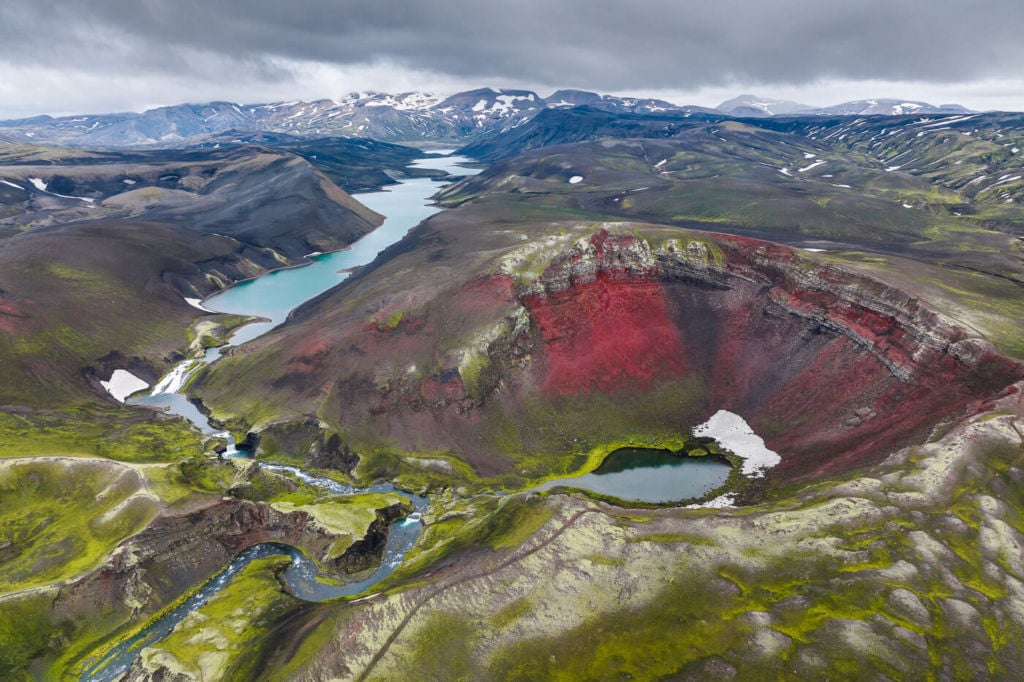
Drone Shot of Raudibotn and Holmsarlon, the big blue lake in the background.
Getting to this beautiful gem in the Highlands is relatively easy, despite its remote location. You will need a 4X4 vehicle; a Dacia Duster or similar is ok. There are a couple of small creek crossings on the way, though They should be doable, don’t forget to check the water levels before crossing them.
The drive is relatively long as it will take almost an hour from road F208 south. Also, the road is rough in places, but the scenery along the way is fantastic.
Once you reach the parking spot, the Hike to Raudibotn will take about an hour. If you plan to visit this location, I recommend accounting for an entire half-day.
Ready? Let’s go!
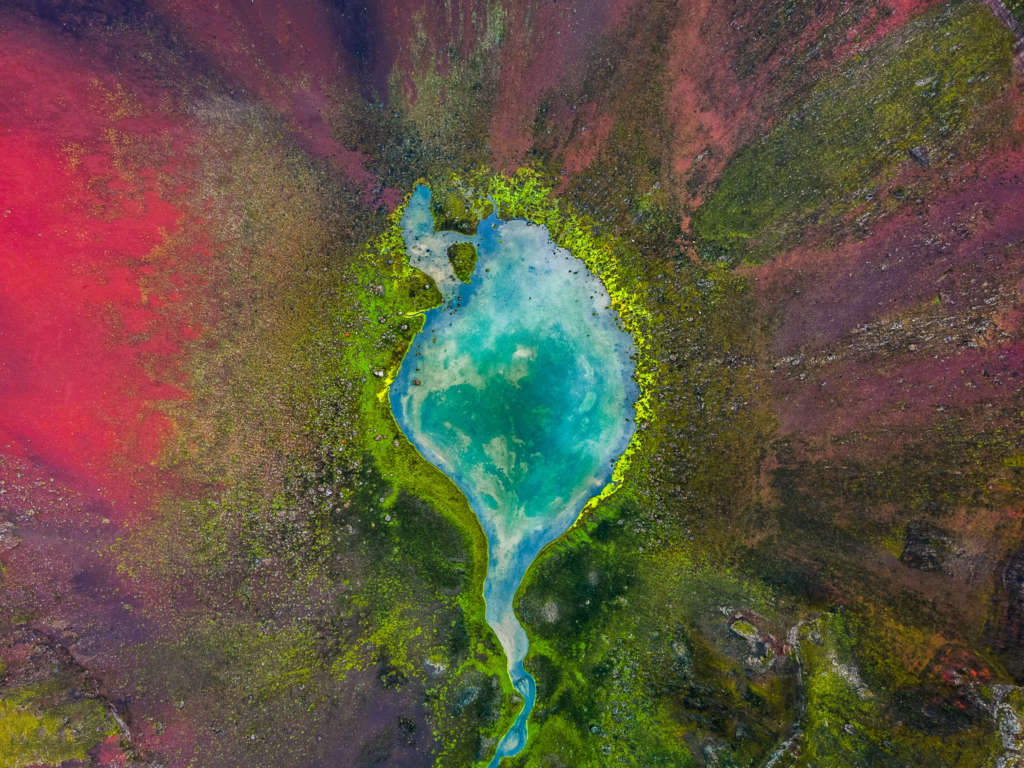
Drone Shot of the small lake in the middle of the Raudibotn crater
How to Get to Rauðibotn & Outline of the Hike
- How to get to Raudibotn: from the Ring Road, you turn to Road 208. Keep going straight until you turn to the left onto Road 210. Eventually, Road 210 will become Road F210. Follow the road until you reach the parking spot, just by the Holmsa River, which you should not attempt to cross. The drive from the Ring Road will take about 45 minutes to an hour. A bumpy ride in some stretches for smaller 4WD vehicles – like the Duster I rented. If you are looking for car rental options, I can definitely recommend Blue Car Rental (with 5% discount) for cars and CampEasy for Camper Vans.
- Start of the Hike: you can leave the car at the starting point of the hike, or, depending on water levels, you can proceed along the same path with the vehicle until you reach another parking location up a small hill. It will cut about 10 minutes from the hike if you can park there. Check the water levels before crossing!
- Photography & Scenery value: Compulsive shooting; you may not want to leave this location once you get there.
- Difficulty: easy. There is little height difference, and the trail is neither steep nor on rugged terrain.
- Tip: The Axlafoss waterfall is close by and definitely worth visiting for a photographic stop.
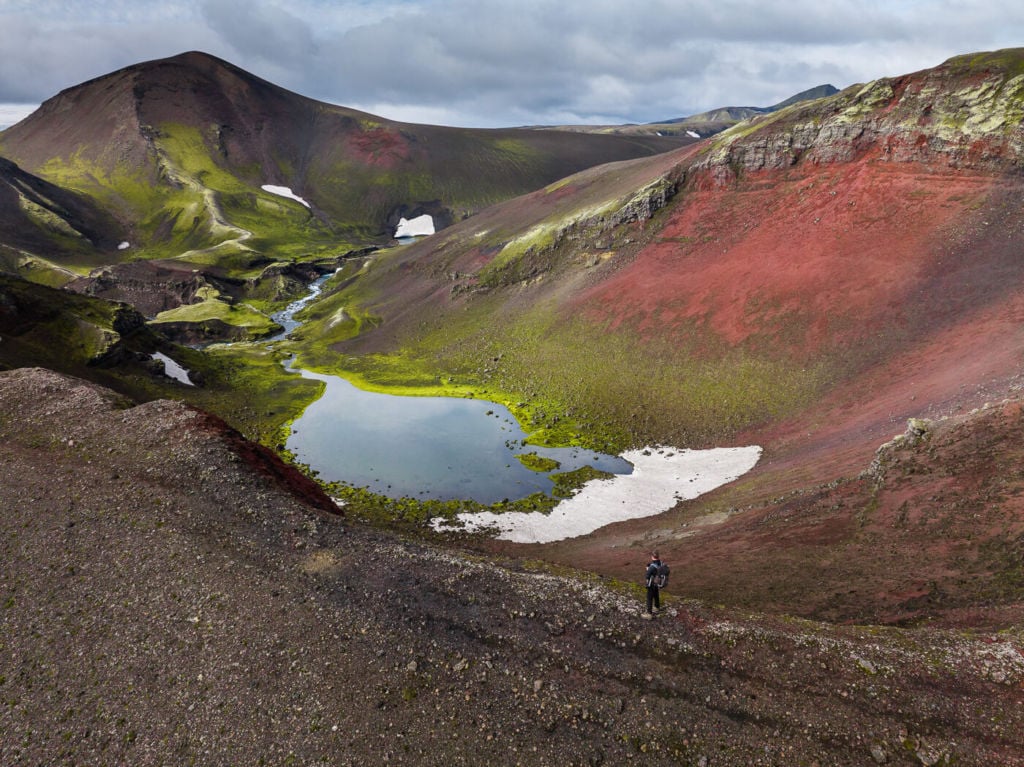
The crater viewed from its rim.
The Rauðibotn Trail
| Distance | Elevation Gain | Hike Time |
|---|---|---|
| 7.31 KM | 230 MT | 2.30/3.30 hrs |
The crater is not visible from the parking spot, but you will easily find the trail heading up a small hill. Unfortunately, there are also some quad tracks; if possible, avoid them and follow the trail. The Natural environment here is very pristine but also fragile.
The magnificent views will slowly reveal themselves as you reach the top of the first hill. The crater, the waterfalls of the Hólmsá, the blue waters of Hólmsárlón and Mount Maelifell across the black sand plains.
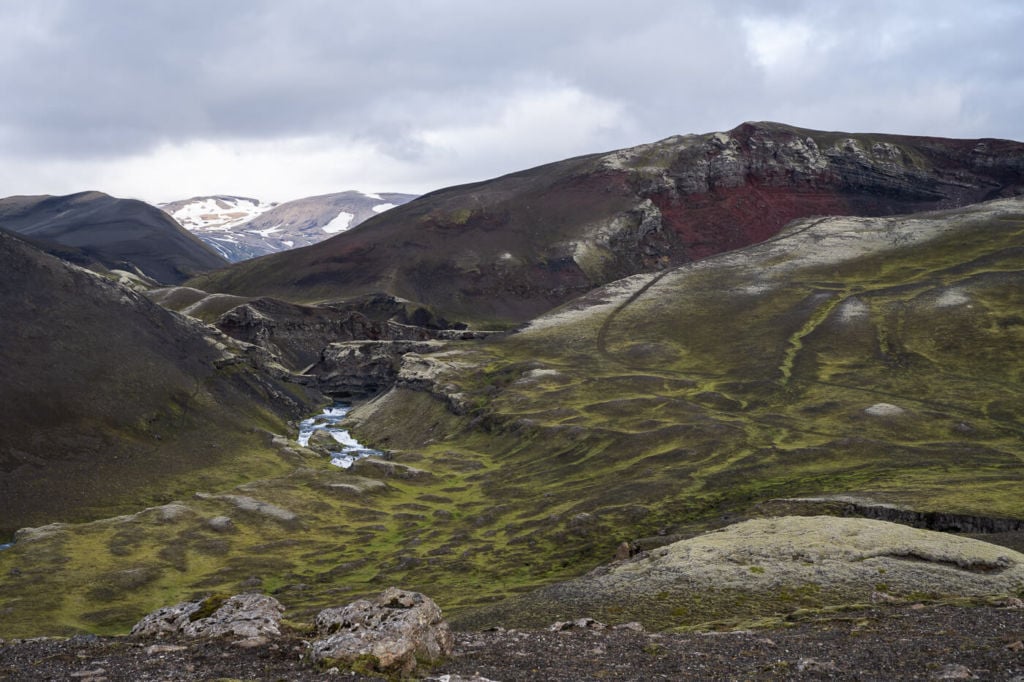
View from the trail towards Holmsarlon. The trail leading up to the crater is on the right. That is the crater’s rim.
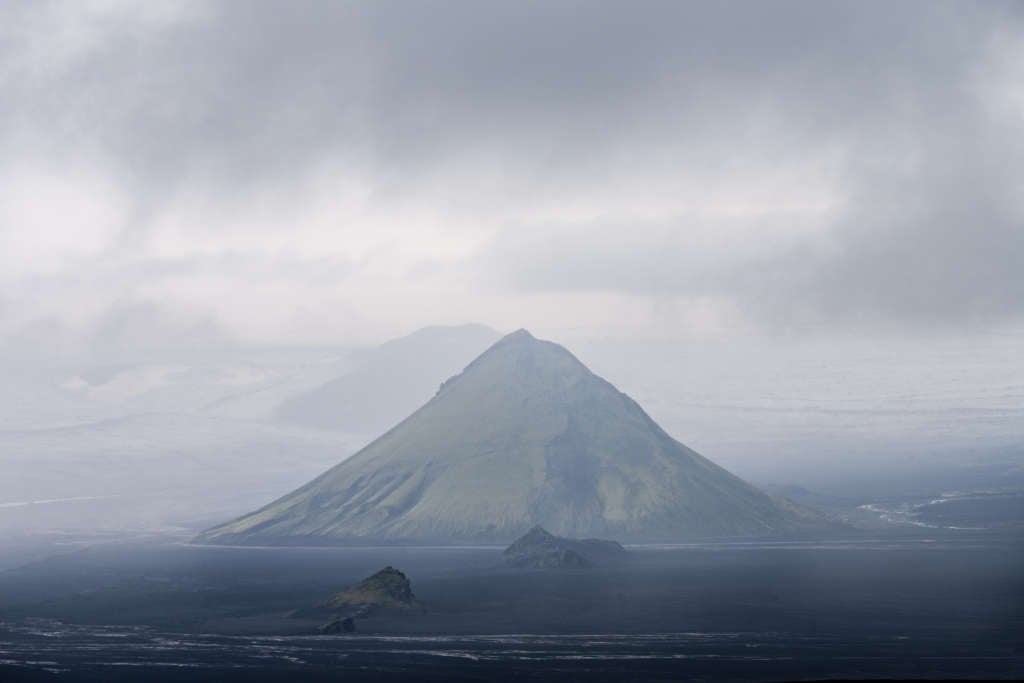
The sub-glacial volcanic Mountain Maelifell
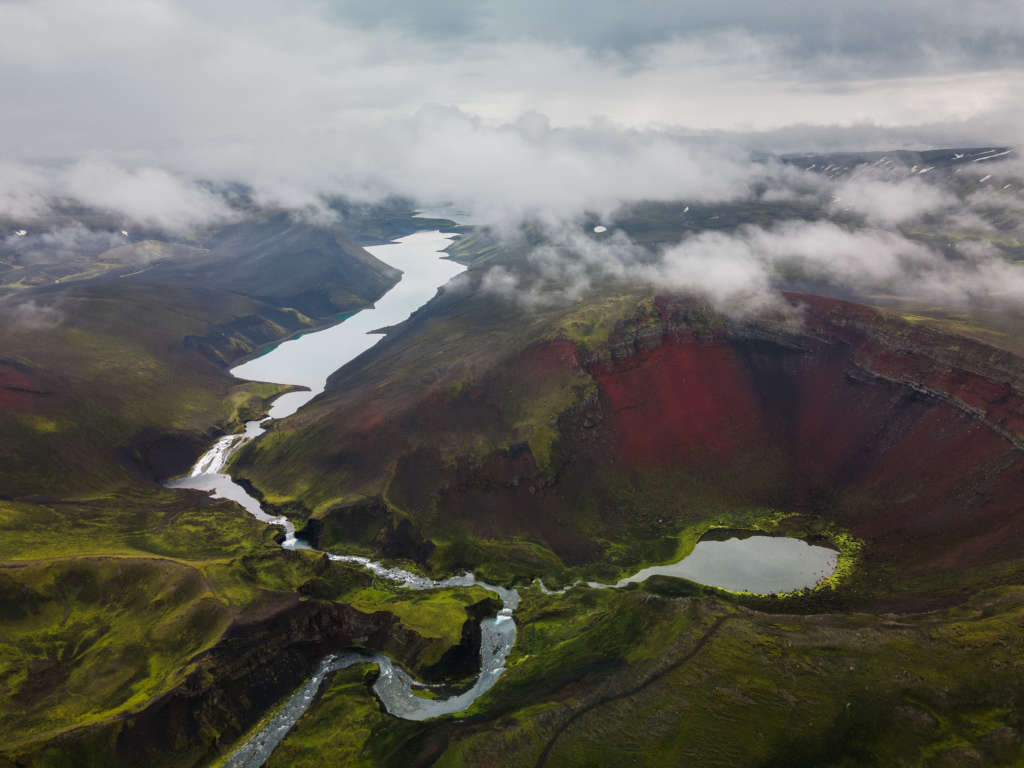
View over the Raudibotn crater and Holmsarlon
As you continue, the trail will gently go down the slope; you can either go ahead towards the waterfalls and Hólmsárlón or turn right towards the top of the crater.
I’d also recommend hiking around this area and the Holmsa River if you have time. It’s a magnificent location with several waterfalls; generally, the site is worth exploring.
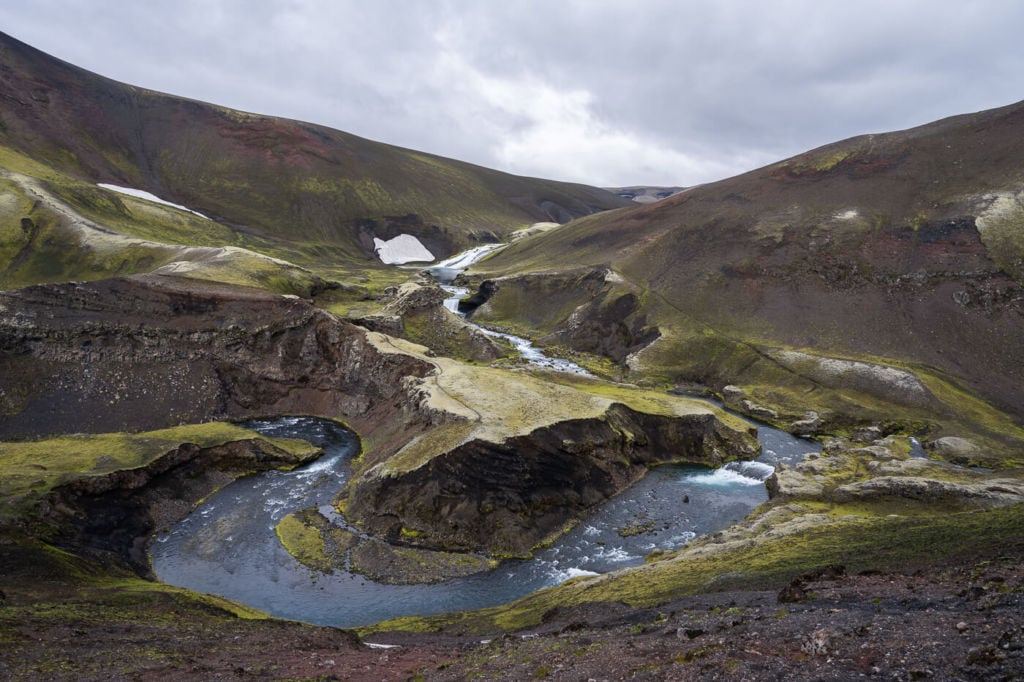
Small Horshoe bend by the Holmsa River.
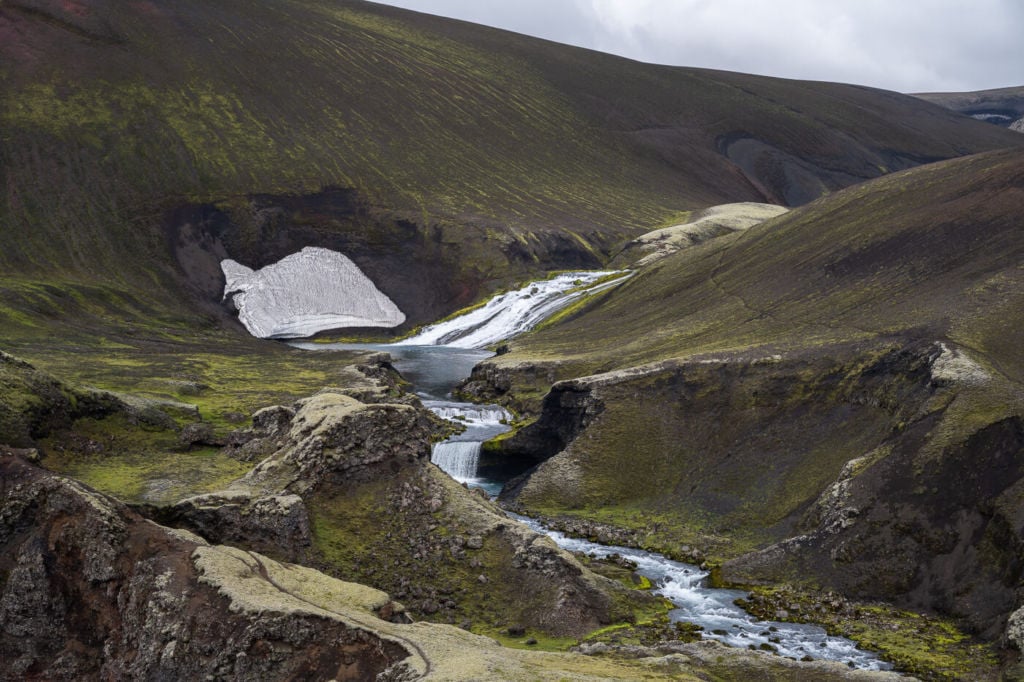
Part of the Hólmsárfossar waterfall, in the background.
Next, you can continue up the Crater’s Rim to the top.
At the end of the hike, the top of the crater is also where you will have the best view over this Gem in the highlands and the surrounding landscape.
Photos and Photography Tips for Rauðibotn, a gem in the Highlands
Here’s a drone clip to give you an idea of the scale and photographic opportunities this location has to offer:
From the ground, the best vistas are from the top of the crater at the end of the hike, but the most photogenic vantage points are on the way up.
You will have the best views over the small lake inside along the crater ridge. As you walk your way up, several spots will suit panoramic composition; the crater is way bigger than it looks in photos, and if you want to capture as many views as possible, a panorama is the way to go.
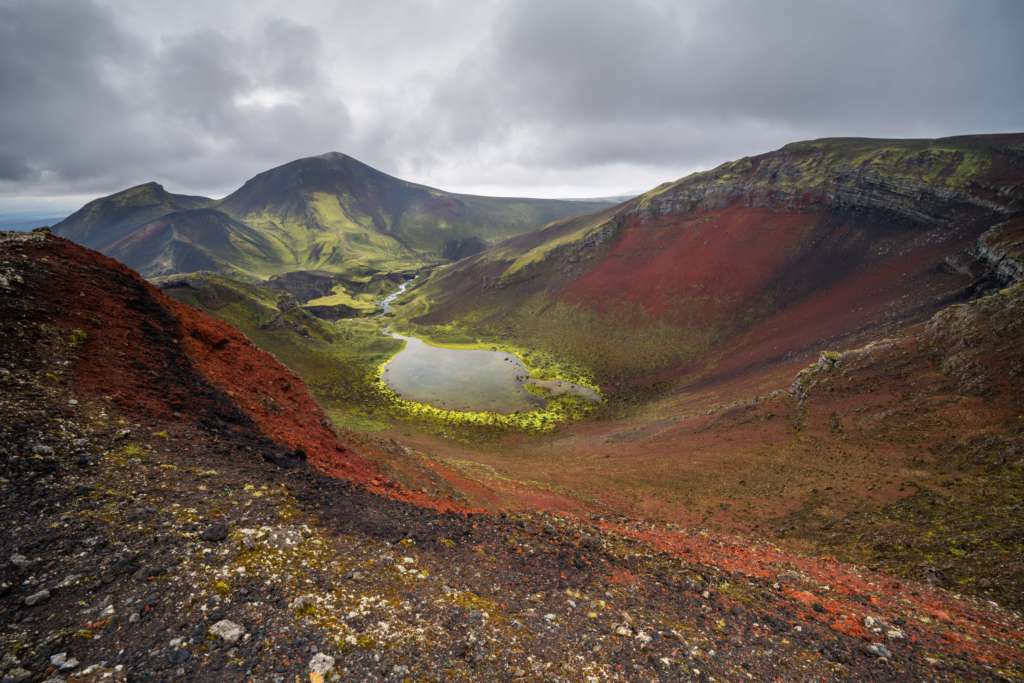
Single frame at 14mm
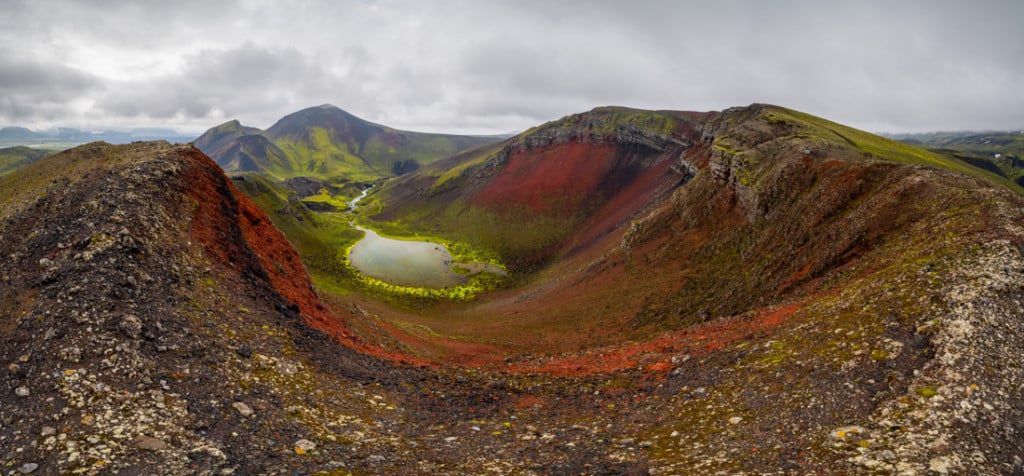
Panorama made with four vertical frames at 14mm.
If you have a drone, the compositional possibilities are your disposal are virtually endless. Not only in terms of Classical landscape photography but also Abstract photos are possible here due to the colours and contrasts of the volcanic terrain.
With a drone, you can take photos from every possible angle.

Drone Shot of the crater, looking towards East/East-SouthEast.

The Crater and Holmsarlon in the background.
The location can be shot in any weather. When overcast, it makes for excellent moody images and a nice contrast with the colourful layers of the crater.

When sunny, the colours of the crater will pop out even more. I would avoid the harsh sunlight of the middle of the day in the central summer months if going there for photos only, but either way, you will visit a fantastic wonder and bring back memories you will cherish for a long time. Raudibotn really is a hidden gem in the Highlands.
Map of the Rauðibotn Hike:
Here is the map of the hike. If you need a GPS track, you can download the .GPX file from the Komoot activity.
Where to stay near Raudibotn, a Gem in the Highlands
There are a few options not too far from this location that are worth staying at, especially if you plan to explore the highlands further. The accommodations are either huts with shared dorms or camping grounds (except the Snaebyli Cottage):
- Strútur Hut on road F232, which is on the Right of road F210 when coming from East. Please note getting there from Raudibotn requires crossing the Holmsa River (the same one close to the parking spot), which may require a large 4WD.
- Álftavötn hut, on road F233, which requires a large 4WD. There is also a river to cross. Do not attempt unless you drive a large 4WD and have experience crossing rivers.
- Hólaskjól-Higlandcenter on road F208. Be careful not to take road F233. I recommend avoiding that road unless you know what you are getting into, as it has a rather dangerous river crossing. Instead, you should go back to the crossroad between Road 210 and 208 and continue from there.
- Snaebyli Cottage on Road F210, close to where it changes into Road 201
Additional Resources
- Check out more Photo Hikes in Iceland here
- If you enjoyed this crater as I did, you will most likely enjoy Rauðaskál.
Car or Camper Van Rentals
I can definitely recommend two companies here:
- Cars: Blue Car Rental, which is the largest Car rental company in Iceland, and for good reasons. Free Cancellation, Unlimited mileage, 24-hour break assistance, SCDW, CDW, TP, and GP insurance are included in the price. Blue Car Rental is also located within walking distance of the Keflavik Airport, so you can be on your way to explore Iceland right away. I’ve always been happy with my rentals there, which is why I’m happy to recommend their services here on my blog.
- Camper Vans: CampEasy. With CampEasy, you can rent 2WD or 4×4 campers alike. With a raised Chassis, larger tires, and extra insurance with reduced liability for river crossing, their 4X4 campers are the best choice for your trip into the Highlands. Their Website also provides extensive information about roads you can take and instructions on river crossings. Perfect choice for a hiking holiday in the highlands!
These are my two favorite companies in each respective rental area, which I why I am happy to recommend both here. If you also like this blog, booking through them is a great way to support it. I’ll get a small commission fee at no additional cost, so you can essentially support the running costs of this blog for free too.

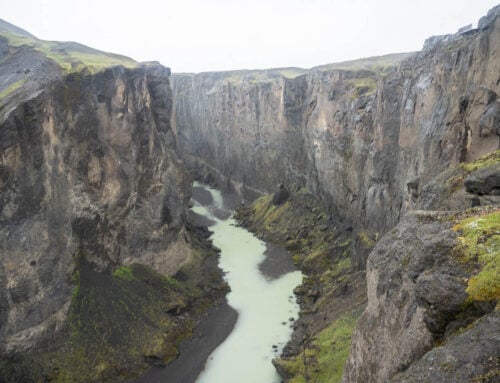

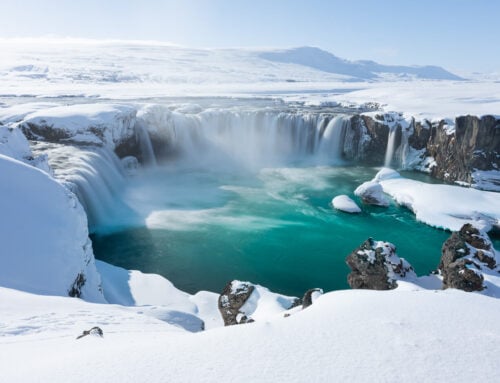
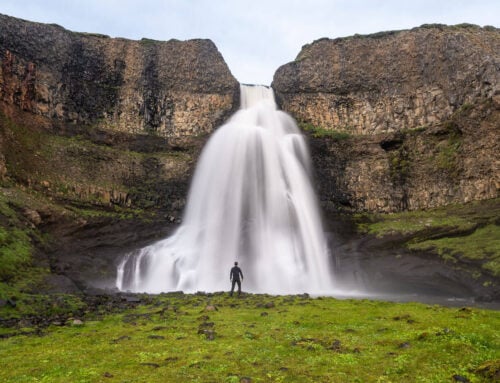
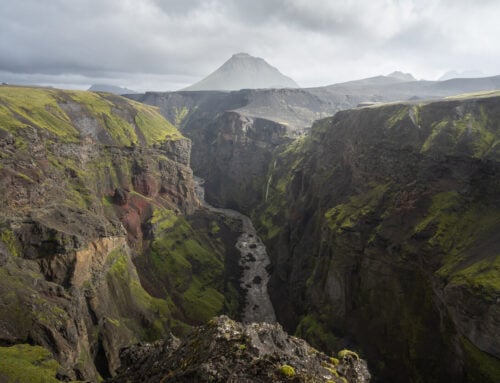
Hi. Have you attempted hiking the lakes? I’d like to do this if able to cross the water
I have not, perhaps this year. Can’t tell if there is a way to cross the river from that side safely. I’d attempt it from the other side directly via Road F232.